Privateer 161
Test Location: Washington
Duration of Test: 3 months
Size Tested: P3
Geometry: See Below
Build Overview (as tested):
- Drivetrain: TRP TR12, with SRAM GX Cassette
- Brakes: Hayes Dominion A4
- Forks: Manitou Mezzer Pro and Fox 38 Factory
- Rear Shock: RockShox SuperDeluxe Ultimate
- Wheels: Sun Ringle Duroc SD37 Pro and WTB Proterra Tough i30
Wheel Size: 27.5’’ on Size P1; 29’’ on sizes P2 through P4
Travel: 161 mm rear / 170 mm front
Blister’s Measured Weight (as tested; w/o pedals; w/ Fox 38 and Sun Ringle wheels): 35.8 lbs (16.2 kg)
MSRP:
- Frameset (with RockShox SuperDeluxe Ultimate): $1,759
- Shimano SLX/XT Build: $3,949
- SRAM GX Build: $4,380
Reviewer: 6′, 165 lbs (183 cm, 74.8 kg)
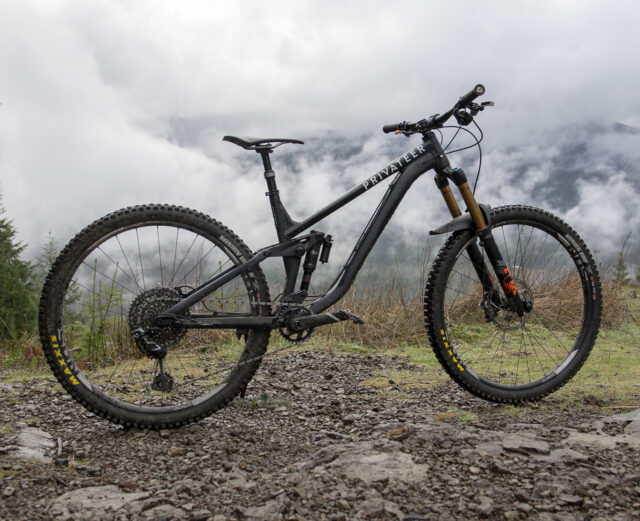
Intro
The Privateer 161 made a real splash when it was released, primarily for its notably progressive geometry and commendable affordability. As we discussed with Privateer’s Sam Meegan, in Episode 51 of our Bikes and Big Ideas podcast, Privateer saw that most bikes that were pushing the envelope when it comes to geometry were from more expensive, boutique brands, and set out to change that. That started with the 161, developed with EWS racer Matt Stuttard, which was intended to be an Enduro race bike first and foremost. After several months on it (and despite not actually sticking any number plates to it during that period), I’ve come away impressed.
The Frame
The 161 frame is offered in aluminum only, features a Horst-link layout with 161 mm of rear-wheel travel, and is available in four sizes, which Privateer names P1 through P4. These roughly correspond to a small through extra large in most brands’ sizing schemes, and Privateer recommends the P1 for riders as short as 5’ 3’’ (160 cm). A 205 x 65 mm trunnion-mount rear shock sits vertically in the frame, leaving ample room for a water bottle inside all four sizes, and the frame features a threaded bottom bracket shell with ISCG ‘05 tabs.
The rear brake and dropper cable are routed externally, on top of the downtube, until the dropper cable enters the seat tube just above the bottom bracket. The rear derailleur cable is routed internally through the downtube and chainstay. Bolt-on cable guides on the side of the head tube further secure the cables, and the internal routing for the rear derailleur cable features bolt-on ports to simplify routing. Rubber guards on the chainstay, seatstay, and downtube round out the notable features.
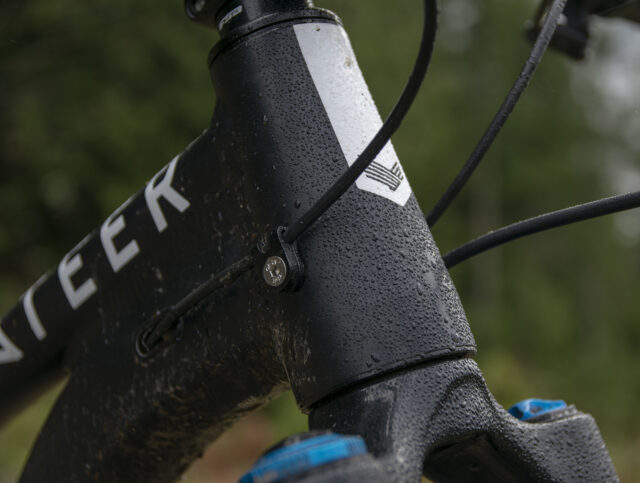
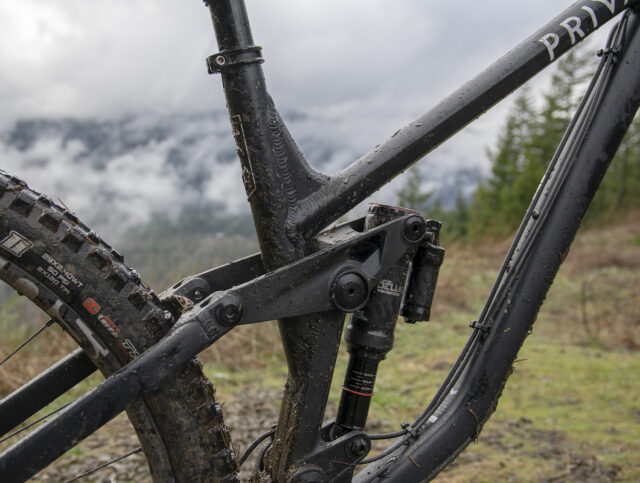
The size P1 161 uses 27.5’’ wheels, while the three larger sizes are all 29ers. We’ll discuss that choice in more detail in the Fit and Geometry section below, but it makes a lot of sense for a longer-travel bike to vary the wheel size based on frame size, and it’s becoming increasingly common. All sizes have 161 mm of rear-wheel travel, and are designed around a 170mm-travel, short-offset fork.
The 161 frame looks and feels particularly stout. The tubes are large in diameter, the bearings are huge (and the main pivot features three of them), and the rocker link is one massive piece as well. It all adds up to a very stiff frame that we expect to hold up well to extended use, but also comes at a bit of a weight penalty. Privateer claims 8.15 lb (3.7 kg) for a P1 frame without the rear shock or axle, which is relatively heavy, even for an aluminum Enduro frame. But the cost savings have to come from somewhere, after all, and I’d much rather see a little extra weight than cut corners when it comes to build quality or durability (especially for a bike with the 161’s design intentions).
Privateer helpfully publishes suspension kinematic data for their bikes, showing a leverage curve that has a very slight digressive section in the first ~15 mm of travel, but then becomes progressive from there through bottom-out, in a nearly linear fashion from the sag point and on. The leverage ratio peaks at about 2.63:1 and falls off to 2.16:1 at bottom-out.
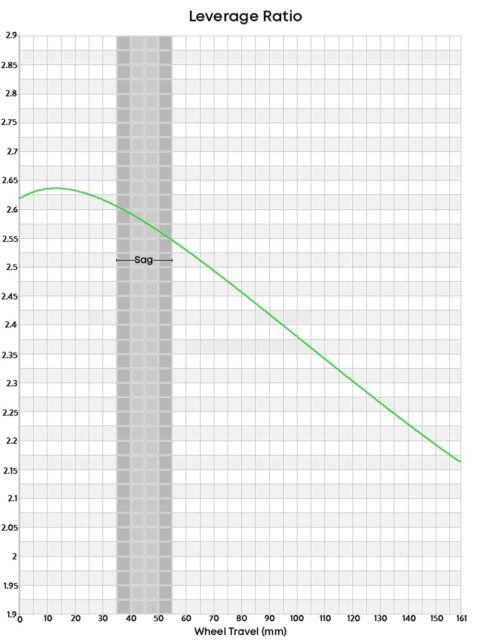
That’s a somewhat progressive curve but not wildly so (~18% total progression), and features a nice straight line through the majority of the travel, which tends to make for a more straightforward shock setup. The tiny section of digression shouldn’t make all that much difference, as it happens well before the sag point.
Privateer’s published anti-squat for the 161 is notably high, though the graph shown below is for a 32/16 gear combination. In lower gears, anti-squat is reduced slightly, but remains well over 120%, at sag in a 32/50 gear. Per their graph, anti-squat starts at about 164% at topout, and trails off roughly linearly to about 82% by the end of travel, putting it at roughly 135-140% at sag. That’s a bit higher than average for this sort of bike, and as we’ll discuss more later, it contributes in part to the notably efficient pedaling performance of the 161.
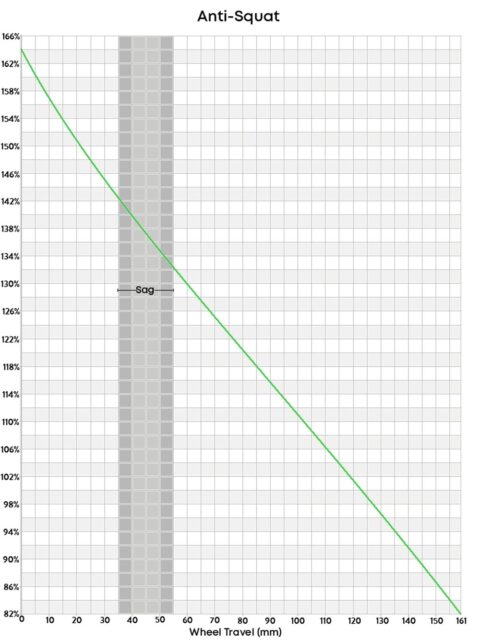
The Builds
Privateer offers the 161 as a frameset, with a RockShox SuperDeluxe Ultimate shock, or one of two complete build options. The breakdown is as follows:
161 Frameset: $1,759 / £1,489 / €1,799
- Shock: RockShox SuperDeluxe Ultimate
161 Shimano SLX/XT Build: $3,949 / £3,149
- Drivetrain: Shimano SLX, with XT shifter
- Brakes: Magura MT5
- Fork: RockShox Lyrik Ultimate, 170 mm travel
- Shock: RockShox SuperDeluxe Ultimate
- Wheels: Hunt Enduro Wide
- Dropper Post: OneUp V2
161 SRAM GX Build: $4,380 / £3,389
- Drivetrain: SRAM GX Eagle
- Brakes: SRAM Code R
- Fork: RockShox Lyrik Ultimate, 170 mm travel
- Shock: RockShox SuperDeluxe Ultimate
- Wheels: Hunt Enduro Wide
- Dropper Post: OneUp V2
As of publishing this review, complete bikes are unfortunately not currently available in the EU reportedly due to the impact of Brexit, but Privateer say they’re working on a longer-term solution that will allow them to bring that option back. Frames and parts are still on offer. Elsewhere, complete bikes can be bought in Sizes P2–P4, but P1s are a frame-only option, as a result of supply chain issues for parts. Privateer is hoping to bring complete P1 bikes back at a later date as well.
Both complete bike options are great, no-nonsense builds that spend money where it makes the most difference for this kind of bike (suspension) and go a bit more mid-tier where it matters less (drivetrain, cockpit). A lot of carbon wonderbikes cost nearly as much for just a frameset, and both builds on the 161 are absolutely ready to race, out of the box.

Privateer sent us the frameset option for testing, leaving me to build the 161 up to my liking. This meant that I could use the 161 as a continued testbed for a variety of parts, including the Manitou Mezzer Pro and Fox 38 Factory forks, Hayes Dominion A4 brakes, Sun Ringle Duroc SD37 Pro wheels, TRP TR12 drivetrain (review coming in the future), and PNW Components Rainier Gen 3 dropper post. All that, plus Maxxis DHF 2.5 / DHRII 2.4 tires with Double Down casings added up to a slightly portly 35.8 lb (16.2 kg) complete bike, without pedals.
I did have two minor hiccoughs when building up the 161. First, the rear brake mount (which uses post-mount tabs for a 180 mm rotor) interfered slightly with the caliper on the Dominion A4s I was mounting up, without using an adapter and a larger rotor. The brace between the two tabs simply sits too high for the caliper to clear. Privateer has since made a running update to the brake mount to add more clearance, and say that their next batch of frames will get the new mount.
Second, as I was routing the rear derailleur cable, the port where the cable exits the frame near the headtube fell into the frame, along with the bolt that’s meant to fix it in place. With the help of a string of four-letter words, I was able to fish the port out using the cable housing, but had to remove the cranks and one bottom bracket cup to retrieve the bolt from the inside of the downtube, via the hole between it and the bottom bracket shell. Ultimately it wasn’t that big of a deal, but was a pain to deal with, and personally, I’d rather just ditch the internal routing entirely, especially since the brake hose and dropper post cable are already routed on top of the downtube.
Fit and Geometry
One of Privateer’s stated goals for the 161 was to bring modern, aggressive geometry to more affordable bikes, and the numbers for the 161 reflect that.
All four sizes get a 64° headtube angle and an eye-popping 80° effective seat tube angle — the steepest of any bike we’ve ever tested at Blister. The actual seat tube angles are similarly steep, at ~75.3–75.5°, depending on size.
Reach numbers are suitably long, to go with that extra-steep seat tube angle, at 445 mm on the P1 through 515 mm on the P4. Our size P3 test bike has a 490 mm reach, and the P2 comes in at 470 mm. As mentioned above, the P1 size gets 27.5’’ wheels, while the other three sizes get 29’’ ones. This is a strategy that’s becoming increasingly popular for longer-travel bikes, and one that we think makes a lot of sense. Long-travel 29er forks, and the big wheels that go with them, necessitate very tall stack heights, which can pose a real problem for shorter riders when it comes to setting an appropriate bar height and being able to properly weight the front wheel. The 161 illustrates this nicely — the P1 actually has a 10 mm longer headtube than the P2, and despite that, its stack height is more than 20 mm shorter.
Similarly, a big 29’’ rear wheel can greatly limit how much a rider, especially one with shorter legs, can move around on the bike in steeper terrain before buzzing their nether regions on the tire. I’m 6’ tall, and still sometimes run into issues moving around on 29ers in steeper terrain for this reason. Giving the small size 27.5” wheels makes a lot of sense for a longer-travel bike that’s meant to be ridden aggressively in steeper terrain, and we’re glad to see this strategy becoming more common.
Privateer also varies the chainstay length of the 161 based on frame size — another trendy move that we’re big fans of. The P1 gets 434 mm stays, and they grow by 6 mm per size, up through 452 mm on the P4. 452 mm is on the longer side of things overall, but not surprising for a bike that’s meant to be an EWS-caliber race bike first and foremost. Privateer’s argument for varying chainstay length is that it helps keep a more consistent balance between the front and rear wheels across the size range, and we’re fully on board with that line of thinking.
All of that adds up to wheelbases that range from a not-super-short 1222 mm on the P1, through a gargantuan 1316 mm on the P4. Our P3 test bike measures in at 1279 mm, and while that’s not the absolute longest wheelbase out there, it’s getting way up there.
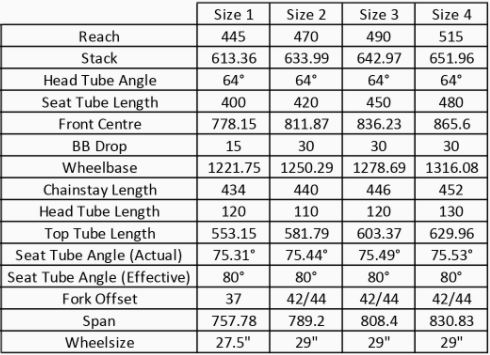
At 6’ tall, I’m squarely in the middle of Privateer’s recommended sizing for the P3 161, and the overall numbers — 490 mm reach, 446 mm chainstays, 64° headtube angle — are right in line with what I’d expect, and have found to work well for me, in a long-travel Enduro race bike. Going in, my biggest question with the 161 was how that wild 80° effective seat tube angle was going to feel, and to answer that, I needed to hit the trail and find out how the 161 climbs…
Climbing
Hopping on the 161 for the first time, it was immediately apparent that the pedaling position was substantially different than anything I had ridden before. I’ve been a fan of steep seat tube angles for a long time — I’m coming up on four years of owning a Nicolai G16, with a 77° effective, 75° actual seat tube angle — but even so, the 161 positioned my hips much farther forward than I was used to when I first got on it. That change in position makes for a substantially different-feeling pedal stroke than you get on a bike with a more conventional seat tube angle. The best way I can describe it is that it feels like you’re almost pushing the pedals rearward during the power stroke, instead of just driving your legs straight down.
Now, of course, different is not necessarily bad. As we discussed in Episode 53 of Bikes and Big Ideas, where I talk about my initial ride impressions of the 161, among other topics, I did wonder to what extent I just needed to get used to the change. And in large part, I have gotten used to it. Certainly, getting on the 161 no longer feels weird. Different than other bikes, yes, but the range of pedaling positions that I’m used to has just grown to include that of the 161.
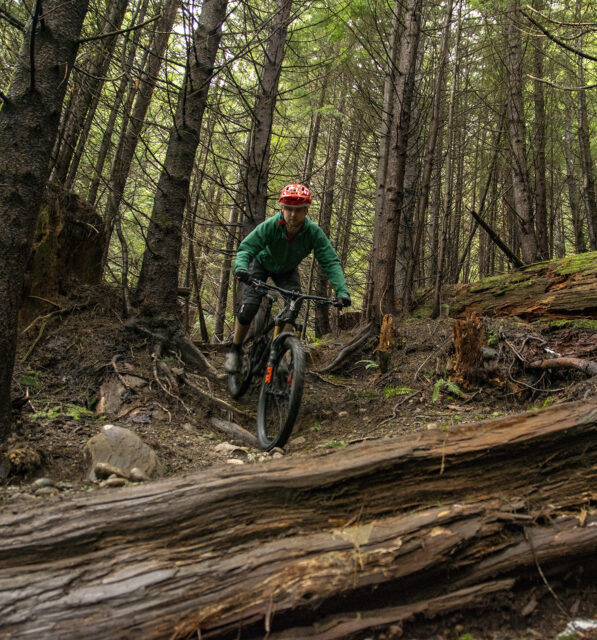
Now that I’m used to it, the seating position has its pros and cons. On the plus side, it’s supremely easy to just sit on the 161 and grind up a steep climb, without needing to pay any attention to keeping the front wheel weighted. The more your riding involves long fire road climbs to get to steep, extended descents, the more in its element the 161 feels. The 161 is also one of the most efficient pedaling bikes in the ~160mm-travel range that I’ve spent time on. The rather high anti-squat values certainly deserve some of the credit, but the more forward pedaling position definitely helps too. With less weight on the rear wheel, the 161 rides high in its travel when pointed up a steep climb, and there’s remarkably little pedal bob for a bike of this sort.
Even with the climb switch open, the 161 pedals extremely well. The RockShox SuperDeluxe Ultimate features an especially firm climb mode, and with that engaged, there’s almost no suspension movement under pedaling at all. The downside of that top-notch efficiency is that the 161 doesn’t offer as much rear-wheel traction when climbing, compared to a lot of other bikes with suspension that remains more active, such as the Guerrilla Gravity Gnarvana, Trek Slash, or Rocky Mountain Altitude. Whether or not that tradeoff is a net positive is going to come down to personal preference, and the sorts of climbing you’re doing. For grinding out long fire-road climbs, it’s outstanding. Riders looking to do a lot of rough, technical climbing might prefer something a bit more active, or simply choose to leave the climb switch on the rear shock off most of the time.
Technical climbing does expose a downside to the 161’s extreme seat tube angle, however. While the 161 is tremendously efficient at making its way up a long, smooth climb at a relaxed pace, the very forward seating position does make it harder to move around on the bike and do the large weight transfers that are often required for technical, stair-step-y climbing, in particular.
As I noted in my early testing, the extreme seat tube angle of the 161 also felt like it mitigated my ability to really put power down if a hard effort was required. It took some time, but I mostly adjusted to that after 15–20 rides on the 161. I no longer feel like the 161 is limiting the power I can put down on smoother climbs in particular, such as when trying to pick up the pace a bit, or just grunt up an especially steep section of fairly smooth trail. Technical climbing still feels a bit awkward, compared to bikes with more moderate seat tube angles, but it’s worth noting that I was spending time on a number of different bikes throughout the testing period. If the 161 had been my only bike, it is possible that I’d have adapted more quickly and more completely, but I think it’s safe to say that the 161 is pushing the limits of how steep a seat tube angle can get while remaining practical.
If you’re mostly climbing fire roads or smoother trails and aren’t in a particular hurry, this isn’t a problem at all. The more punchy, technical sections you’re trying to navigate, though, the harder it is to make a short burst of high output while seated on the 161. In those sorts of situations, I found myself standing up on the pedals more often than I would on a lot of other bikes — and of course, as soon as you stand up, the seat tube angle isn’t relevant anymore, and the 161 just feels like a particularly efficient-pedaling bike again.
It’s also worth noting that, even though the reach on the 161 is quite long, the effective top tube isn’t, again owing to the very steep seat tube angle. Our size P3 test bike has a 490 mm reach, but only a 603 mm effective top tube. For comparison, the Guerrilla Gravity Gnarvana — another ~160mm-travel, 29er Enduro bike — has a 470 mm reach and 625 mm effective top tube, in the size 3 that I tested last year. The cockpit of the 161 does feel on the short side when seated, despite the roomy reach number. On smooth, flatter sections of climbs, in particular, I sometimes found myself letting go of the bar and resting the base of my palm, where it meets the wrist, on the grip to stretch out a little. I’m happy enough doing that, but it does speak to how compact the seated cockpit length of the 161 is, despite running a 50 mm stem.
Finally, there’s the weight. The 161 is not a light frame by any stretch, and as-built, our test bike wound up at 35.8 lb (16.2 kg), without pedals. While a bit of extra frame weight certainly doesn’t help when climbing, in the case of the 161, I don’t think it’s that big a deal, either. This is a bike that’s meant to grind its way up climbs to get to the descents, not race up them. Non-rotating weight, such as the frame, is far less impactful than adding weight in places like wheels and tires, and the 161’s efficient pedaling performance makes it adept at cruising up at a relaxed pace. And for what this bike is meant to do, that’s good enough. If you want a much lighter, ~160 mm-travel Enduro frame you can certainly find one — and probably spend a lot more on it. A bit of extra weight is an entirely reasonable tradeoff for the price point that Privateer is offering the 161 at, and I’m glad they’ve gone that route, rather than cut corners when it comes to durability or build quality.
Descending
Privateer designed the 161 to be an EWS-ready race bike first and foremost, so it had better shine when descending at speed — and it does. It should come as no surprise that a 170 / 161 mm travel 29er with a 1279 mm wheelbase is quite stable and composed when things get fast and rough, but what surprised me the most about the 161 is how quickly it’s willing to change lines and make corrections when really moving. For a bike that is this capable, the 161 is also impressively sharp handling, provided that you’ve got it up to speed. At lower speeds, there’s no disguising the long wheelbase of the 161 — it’s simply a lot of bike to muscle around. As the pace picks up, though, the 161 exhibits an unusual blend of stability when pointed straight ahead, and a willingness to change lines if asked. The combination of a very long wheelbase and a not-crazy-slack 64° headtube angle makes for a bike that’s more eager to turn in and make small corrections than just about anything I’ve ridden that’s also this stable and composed at high speeds.
To be clear, that qualifier is crucial. The 161 is very much a bike that wants some speed and aggression to come alive. If you’re looking for a bike that’s at home both on mellow Trail rides and going flat out in steep terrain, there are many more versatile options that will do double-duty better. The 161 is a bike that wants to go fast, first and foremost. At lower speeds and in tighter spaces, it can feel awkward and ponderous. The more room you have to let the bike run, and the more you’re willing to let off the brakes and go faster and harder, the brighter it shines.
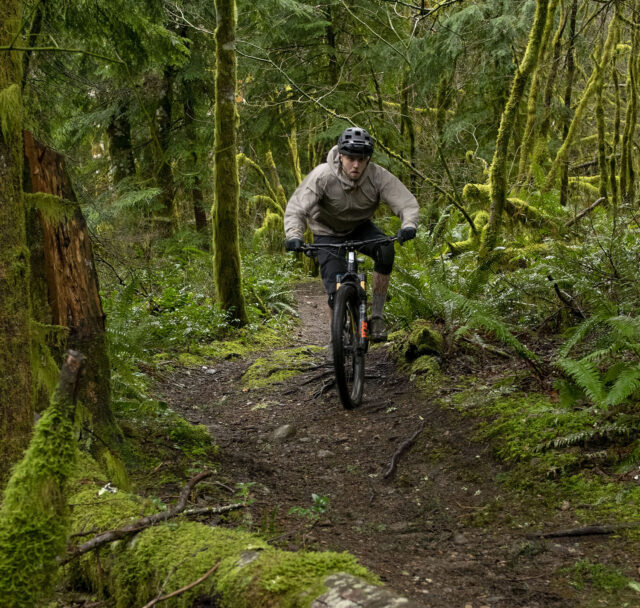
In terms of suspension, the 161 feels about middle-of-the-road when it comes to compliance and traction, vs. supportiveness and pop. Small-bump sensitivity isn’t a particular strong suit of the 161 — again, this is a bike that works better when it’s being pushed hard — but the balance it strikes feels well suited to the intentions and overall performance of the bike. The factory tune on the RockShox SuperDeluxe Ultimate rear shock is well chosen for the 161, and setting it up is straightforward. There’s a good, usable range on both the rebound and low-speed compression adjustments, and though high-speed compression isn’t adjustable, I haven’t found myself missing it. It’s a high-performing shock with good tunability and no extra frills — nicely suited to the 161. I haven’t tried a coil shock on the 161, but Privateer says it works well with either and based on how the 161 feels with a relatively high-volume air shock, I don’t have any reason to doubt them on that point. There’s enough support and progression that a coil shock should be a viable option for anyone who’s so inclined.
Apart from a very slight bit of rattling from the internally routed derailleur cable, the 161 hasn’t given me anything to complain about. The frame is stiff and tracks well, and has been otherwise quiet and trouble-free.
It is worth pointing out that the very steep seat tube angle of the 161 does feel like it reduces the effective amount of drop a given seatpost has. Because the seat doesn’t move as far forward as it does on a bike with a slacker actual seat tube angle, it doesn’t get quite as far out the way for a given amount of post drop, and I’d recommend going with the longest-stroke post possible. I ran the 161 with a 200mm-drop PNW Components Rainier, which worked nicely, but personally I wouldn’t want to go much shorter than that.
Comparisons
The Guerrilla Gravity Gnarvana is one of the more interesting comparisons to the 161.
On paper, they’re quite similar in a lot of respects — they’re both ~160mm-travel 29ers with similar wheelbases, headtube angles, and chainstay lengths (comparing our size P3 161 to the size 3 Gnarvana I rode last year). Despite those similarities, though, the Gnarvana feels far more at home at more moderate speeds, and doesn’t need to be pushed as hard to come alive. The Gnarvana also has considerably more supple suspension, with better small-bump sensitivity, but isn’t as supportive or poppy as the 161. The 161 is more composed and stable when being pushed very hard, but isn’t as forgiving as the Gnarvana, which feels more planted and compliant. The 161 is a decidedly more game-on bike that requires more commitment and aggression than the easier-going Gnarvana. The Gnarvana also offers much more traction when climbing, at the expense of some pedaling efficiency — it’s totally reasonable for a bike in this travel class, but can’t match the exceptionally firm pedaling performance of the 161.

On the other side of things, the Nicolai G16 I have feels significantly more akin to the 161 than the Gnarvana does, but it’s not a perfect comparison, either. The G16 is even more stable than the 161, and isn’t as able to quickly change lines and make small corrections at speed. The 161 also feels a bit more efficient under pedaling than the G16, but the slightly less extreme seat tube angle of the G16 feels more natural on flatter ground, and when trying to make a high-output effort. There’s also the obvious wheel size difference — the G16 is designed around 27.5” wheels throughout the size range. Between the wheel-size difference and the slacker headtube angle and longer wheelbase of the G16, the G16 feels more natural initiating turns with a lot of lean-in and more moderate steering input, whereas the 161 is quicker to respond to small tweaks of the handlebars.
Who’s It For?
This one’s easy. The Privateer 161 is an outstanding option for riders who want a very capable, hard-charging Enduro bike, and are willing to put up with a little extra weight to get a well-built, burly bike at a more affordable price. It’s a bike that demands your A-game and the kind of terrain where you can open up and charge. Riders looking for an easy-going bike with the versatility to cover mellower Trail bike duty will be better off looking elsewhere. Riders looking for an ultra-capable bike that encourages them to go faster and push harder on every descent will be well served by the 161, and it’s an especially impressive offering for its relatively modest price.
The Bottom Line
The Privateer 161 is an aggressive, capable Enduro bike with exceptional pedaling efficiency and notably progressive geometry, at an unusually attractive price. It’s not light and doesn’t have the same Trail bike versatility as a lot of bikes with more moderate geometry, but for riders more interested in going hard on steep, fast descents than riding more mellow, rolling terrain, it’s terrific.
